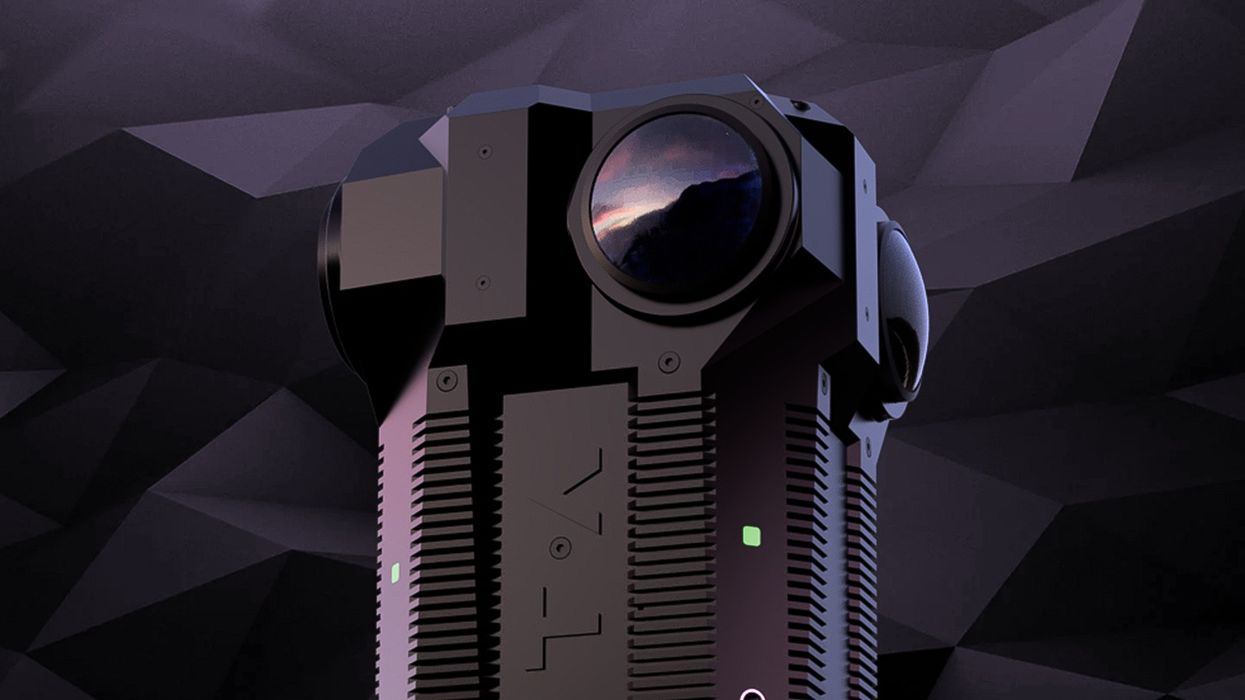This Custom-Made, Top-of-the-Line VR Camera Is a Filmmaker's Wet Dream, with 12K 10Bit ProRes 422
Meta Camera, a company based out of London, makes proper 360° production cameras. Should you run and get it? Can you?

Not to be confused by the Facebook rebrand (or restructure, whatever), Meta Camera has been around for a lot longer. At the very least in name. The gang from the other side of the pond has used its 360° camera tech to shoot VR films for the likes of Formula 1 to the Red Cross, Google to Facebook, and Audi to the BBC. Funny that Facebook should be on their list.
Starting with the Meta One, the team created a production-level 360° camera that offered reduced stitching issues, an array of ProRes flavors, and high frame rates. All for the low, low price of $30,000.
I bet you can see where the catch is. This was followed up by the cheaper (but not by much) Meta Two, which offered proper low-light capabilities.
Now, the Meta Camera team is releasing the Meta Three. Taking a page from Blackmagic Design, the third iteration of the Meta camera line comes with a 12.5K resolution. How much will that run you?
A nice $40,000. What does this custom-made, top-of-the-line VR camera do for filmmakers (besides being a wet dream)?

The URSA 12K of 360°
This isn’t your run-of-the-mill Insta360. The Meta Three is a monster of a camera and packs a punch to match.
Four portrait-orientated 6K sensors run a ring around the top of the camera, giving creatives that crazy 12.5K resolution. These are back-illuminated Super 35mm sensors with dual native ISO that shoot in open gate and have a claimed dynamic range of 14 stops. Each sensor is paired with a super sharp wide-angle lens that opens up to f/3.5. The lenses also overlap quite a bit to create low parallax (or reduced stitching issues).

Much like with the Meta One and Two, the Meta Three records 10bit video in either ProRes 422, HQ, or LT. This is essential for getting proper color detail when color grading in post. However, in a pinch, you can also shoot in a high bitrate H.265 codec. To save all of this footage, creatives can either use four CFast 2.0 cards or four SSDs connected via USB-C.
Here's the Meta One compared to the KanDao Obsidian R 8K 360 camera:
To top it all off, the Meta Three can livestream in 8K. This can be done either through an ethernet port or the HDMI ports using third-party software such as Voysys, which can then send your video to YouTube, Facebook, or private servers.
Meta Camera also has the aptly named Meta Controller, which can run on a PC or Mac desktop, or a Surface tablet. The controller gives you the ability to choose variable frame rate settings, picture profiles, encoding options, pull focus, set your shutter, white balance, and ISO. However, at the time of writing, iPad support is unclear.
That’s the gist of it, but there’s a lot more to unpack. If you want to learn more, check out the Meta Three here. Because we’re here to talk about usability.
The Why of It All
So beyond getting pretty rad 360° video for VR, what is the Meta Three good for? I don’t know about you, but I’d love to see this camera put into a VFX pipeline. For $40,000, it’ll only be affordable for post-houses, but the use cases are exciting to think about.
Imagine pulling an HDRI map for environmental lighting from a Meta Three video. Not only would you have detailed control over your lighting, but you would be able to capture all the variables of your location. But let’s go further and think about virtual production or shooting in a volume.
For Oblivion, director Joseph Kosinski and VFX house Pixomondo had a team shoot for four days with three Red Epic cameras to capture footage for a 360° rear project screen. All of this footage was then stitched by hand. The Meta Three could have done that for a fraction of the cost and without stitching by hand.
On the Topic of Affordability
As cool as the Meta Three is, it’s still expensive. But so is the ARRI Alexa, and folks still manage to find a way to shoot on that. Yes, the Meta Three is a niche camera when it comes to narrative work, but it performs above and beyond in that niche.
This isn’t to say you should go out and buy one. If you’re an indie filmmaker, a creative on a budget, or even a camera manufacturer, this is tech to be inspired by. Remember when only RED cameras could shoot in RAW? Now you can get 6K RAW for about $1,995. How about high dynamic range? Creatives had to pay through the nose to get anything over 9 stops. Now your iPhone has enough dynamic range to shoot a movie.
Out-of-reach technology is only out of reach for so long. While we wait, we can use it to inspire us to create more. So while you can’t afford a Meta Three, yet, the possibilities it opens up demand to be explored.
Check out weekly specials, deals, and rebates: Pro Video Gear, Pro Audio Gear, Lighting











